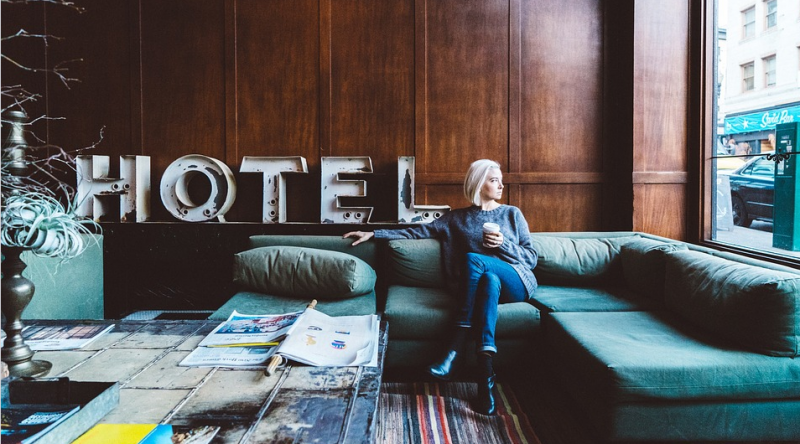The RFPs have been analyzed and you have narrowed down your selection to two or three cities with two to five hotels at each destination. No destination or hotel is a perfect fit for your group, but they all meet your must-haves and seem to be 95% there. If possible, now is the time to attend a site visit. It’s perfectly reasonable to ask a hotel to schedule a site visit with you. This gives you an opportunity to walk through the venue and experience what it would be like for your attendees.
![overnight site visit]()
Review Your Findings with Key Stakeholders
Up until now, you and your staff have probably been doing everything in a vacuum, with the occasional update to the boss. Now is the time to review your research with your management team, event committee, and a few attendees, exhibitors and sponsors. If possible, hold a face-to-face meeting with all of them. Provide a video conferencing option for those who cannot be onsite. Present your assessment using the previous chapter as your guide. Ask for feedback and provide an opportunity to help narrow down your choices. This is critical before going to a site visit because you don’t want to waste your time and resources attending a site visit for a venue your organization won’t consider.
Schedule Site Inspections and Stay Overnight
Once your destinations and hotels have been selected for a closer look, it is time to schedule onsite visits. Bring at least one attendee, exhibitor and team member with you. Site visits are usually free to the planner if your event is large enough. You’ll want to spend at least half a day at one venue and if possible, spend the night. Why? Because you will get a true feel for the facility, including the check in/out experience, restaurant selections and service levels, quality of guest rooms and the ability to use the hotel’s amenities such as the spa, pool or fitness center.At each hotel, make certain you do the following:
- Spend time with the chef and taste multiple food samplings of the type of menu your attendees are most likely to enjoy.
- Meet with the catering manager and review food and beverage minimums. Go into every area of the hotel, from the parking deck to the lobby restroom.
- Ask yourself: does the atmosphere and cleanliness measure up to your standards? And,
- Does the meeting space flow? In other words, is it easy to get from the general assembly to the breakout rooms, to the food and beverage stations and then back to the guest rooms?
- If possible, briefly sit in on a live meeting in the event spaces the venue quoted. Take notes about the acoustics, visual appeal and audiovisual use – including lighting and monitors or screens. Can you hear and see the speaker?
- Will your event theme work within the parameters of the space? For example, if one of your functions is holding a black-tie gala, is there a room that looks as elegant as your guests will be?
- What sort of technology options do they offer? It is estimated that attendees will bring up to three devices with them – their smartphone, tablet, and laptop. If so, it would be ideal if the hotel and convention center offers charging stations. In lieu of that, attendees need ample electrical outlets within the meeting space where they can plug in. Also, does the hotel have spare chargers? Research says phone chargers are the most forgotten item by business travelers.
- Does the hotel and convention center have branding options available? Can you display your meeting and logo on the digital marquee out front? What about opportunities within the lobby or entrance area?
When You Arrive, Validate the Following Things
- At the airport, look into the number of flights to and from major cities. In addition, are there any major renovations going on? What about cleanliness, flow and ground transportation? Is the destination close to the airport?
- If possible, arrive at the destination at the same time of year you are planning your convention. What is the weather like? What sort of weather problems could you experience (hurricanes, tornados, monsoons, etc.)?
- Check in with the local CVB. How many meetings of your size does the destination hold per year? Is there any chance there will be another large meeting at the destination at the same time as yours? How will that affect flights, ground transportation, and service levels?
- Once on the property, validate their guest room rate from the RFP. Does that rate include Wi-Fi, taxes, parking, and access to all the amenities? If not, what are those individual charges?
- What is the parking situation? How far away is it? Do they offer valet service?
- Are there any renovation plans on the horizon for the convention center or hotel? What are those plans and when will the work start and end?
- Is public transportation close by? If it makes sense, go on the subway and bus line – how long do you have to wait? Do you feel safe? Is it straight forward to get to your destination?
- Walk several blocks around the convention center and hotel. What exactly is available within a 3-, 5- and 10-block radius? Count the number of restaurants, attractions and nightlife options. Check on Yelp regarding star ratings and comments. If staying overnight, try to do this in the evening with your group. Do you feel safe moving in and around the destination?






